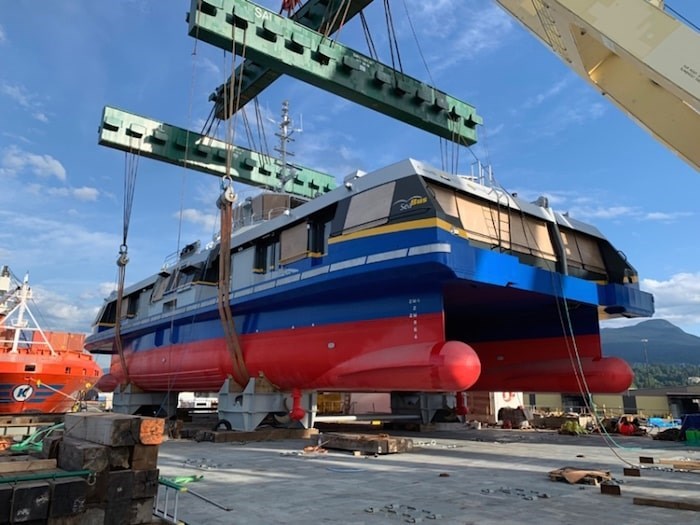The latest addition to TransLink’s SeaBus fleet is on the water today, just a couple years behind schedule.
MV Burrard Chinook is on the inlet for sea trials, the next step in the process before it can go into service.
“We're very excited for the launch of Burrard Chinook,” said Dan Mountain, TransLink spokesman. “We still have to get Transport Canada official verification but we do expect it to be in service by the end of the summer.”
On the water, the Chinook’s captains will be testing its speed, emergency stops, turning and docking.
“Everything seems OK. We expect it to go fine. We just have to do a follow-up process,” Mountain said.
TransLink ordered the new SeaBus in 2017 to support 10-minute sailings during rush hour but it has been hampered by delays and a global pandemic.
When it arrived from Dutch firm Damen Shipyards Group in the summer of 2019, engineers determined the vessel was not seaworthy. The Chinook sat several inches lower in the water than the rest of the fleet, which would make docking difficult and could prove dangerous in choppy water. They attributed the problem to excess weight added when TransLink modified the design to include air conditioning and a more sophisticated emissions control system.
To remedy the problem, they had to install larger bulbous bows, making the SeaBus more buoyant. At the time, they hoped to have the Chinook in service by summer 2020 but the order for the parts from Singapore took more than a year when COVID-19 shut down operations overseas.
Despite the massive delays, re-engineering and construction, TransLink won’t be under water financially, Mountain said.
“We've been in a lot of contract talks with Damen Shipyards, but after everything, it's still coming in under the original budget of $29 million,” he said.
The Chinook made the trip to Lonsdale Quay terminal from the Point Hope Maritime Shipyard in Victoria on its own power on Tuesday.
As for when 10-minute rush-hour sailings will return, it will depend on ridership, Mountain said.
Across TransLink as a whole, boardings are about 40 per cent of what they were in May 2019, prior to the pandemic. SeaBus traffic specifically is still around 30 per cent of May 2019 volumes, which is likely due to it serving mainly downtown office commuters.
“Our projections predict an overall system-wide rebound between 70 and 90 per cent at some point next year,” Mountain said. “It will be based on demand, of course.”



